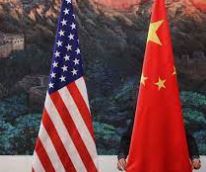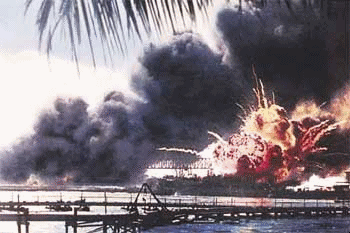
When Wars Converge: Pearl Harbor, World War Two, and the Wars of the World in 2023
When Wars Converge: Pearl Harbor, World War Two, and the Wars of the World in 2023
December 7, 2023 finds some Americans thinking about that long-ago attack on the U.S. that propelled the nation into World War Two: Pearl Harbor. While this attack on American power in 1941 launched us into the Second World War, it is worth considering exactly how this event created what we now think of as World War Two, and how a similar attack or event could tie us and the world into a Third World War.
Many general history texts and other content generally recognizes that World War Two had a specific start date. Most Americans and Europeans recognize September 1, 1939 as the start of World War Two. This is when Germany invaded Poland. In Asia, a date some argue for is when Japan launched a full-scale invasion of China in 1937. In reality, the real start date for what we call the Second World War is December 7, 1941.
When Wars Converge: World War Two
Think about it this way: Japan’s invasion of China in 1937 began a major regional war that, from 1937 to December, 1941 included China, Japan, the Soviets, Mongolia, and French Indochina. This large regional war killed millions, destroyed many cities, almost led to a war between Japan and Russia (after some large border battles) and was a major point of contention between the U.S. and Japan in diplomatic and economic areas. Likewise, when Germany invaded Poland in 1939, Britain, France, the Soviet Union, Italy, and many other nations joined the fray. Because the colonial empires of several of these European belligerents included territories in North Africa and the Middle East, these regions also became involved. But, this was still a regional war. A very large and all-consuming regional war, but by no means a World War.
At this point, up until December, 1941, these two large regional conflicts were NOT joined together into a single, world-spanning war. But wait, you say: Germany, Italy, and Japan were treaty allies at this time. Doesn’t that make it a world war?
The answer to that is NO. The two European members of the Axis on the one hand, and the lone Asian member of the Axis did not share any foes at this time. Also, Germany and Japan did not engage in shared planning, or arms exchanges. No Japanese forces fought alongside their fellow Axis members. These were two separate wars fought on opposite sides of the globe.
The convergence of these two regional wars into the Second World War came when Japan attacked the U.S. Navy base at Pearl Harbor on December 7, 1941. At the same time, Japan also attacked British and Dutch colonies in the Asia/Pacific region, tying Britain’s war (and the Dutch war with Germany as well) to Japan’s war in Asia. Other British Commonwealth nations and possessions already at war with Germany and Italy were also now at war with Japan, including Canada, Australia, New Zealand, South Africa, and India.
State of the World in 2023
How might this relate to the state of the world in 2023? Today we can see a loose alliance of various authoritarian states: Russia, China, Iran, North Korea, and their smaller buddies such as Myanmar, Venezuela, Syria, and the Jihadist armies of Hezbollah in Lebanon, Hamas in Gaza, and the Houthis in Yemen. They are known to share military arms and supplies, exchange information, and, some believe, coordinate their actions to maximize the negative impact on the Western World.
Russia is involved in her aggressive war in Ukraine. China is aggressively engaging in territorial disputes with Japan, the Philippines, Vietnam, and India, while openly preparing for war with Taiwan. North Korea acts belligerently on a regular basis. Iran actively supplying and aiding Hezbollah, Hamas, and the Houthis. Hamas of course, launched a barbaric attack on Israel and is now engaged in a major war. Venezuela just this week declared ownership of large parts of neighboring Guyana, causing fears of another war.
Just as these are all separate conflicts in one sense, they are all tied together in that in all cases, their opponents are either Western Democracies or allies of those democracies. Also, the West (think the U.S., Britain, France, Germany, et al) are actively supporting both Ukraine and Israel to the tune of billions of dollars and massive amounts of military hardware, much of that weaponry coming right out of the stocks of equipment held by those Western militaries.
Now, in December of 2023, Venezuela, a socialist ally of Russia and China, is making noises about invading Guyana. The U.S., Britain, and Brazil have already indicated support for Guyana. If that indeed turns into a war, that would be three regional conflicts demanding attention and resources from the West.
How a Third World War Could Happen in 2024
What if China were to step up pressure on Taiwan, or perhaps even attack? What if China became more aggressive with the Philippines in their maritime border dispute? What if North Korea engaged in border conflicts with South Korea again?
What if Iran-backed proxies in the Middle East escalate attacks on American troops there and/or escalate their attacks on maritime shipping? What if the U.S. launched a major retaliatory strike against those proxies and that strike included Iran?
Any of these scenarios can turn into the point of convergence that can bring these various regional conflicts together into a new World War, just as Pearl Harbor and the other Japanese attacks in December, 1941, brought together the two big regional wars into World War Two?
If this happened, America is not ready. In World War Two, the U.S. became the Arsenal of Democracy. Our industrial output outstripped all others. But today, in 2023, America has allowed her industrial capacity to wither. China is already out-producing America industrially, and also in terms of military equipment. A long war with China (not to mention China’s buddies) will likely be a defeat for the U.S. and the West. America must rebuild her industrial infrastructure, while actively discouraging our enemies’ aggression without sparking a new world war. It may be too late. But America and her allies must try, for the future of democracy and for the world.

